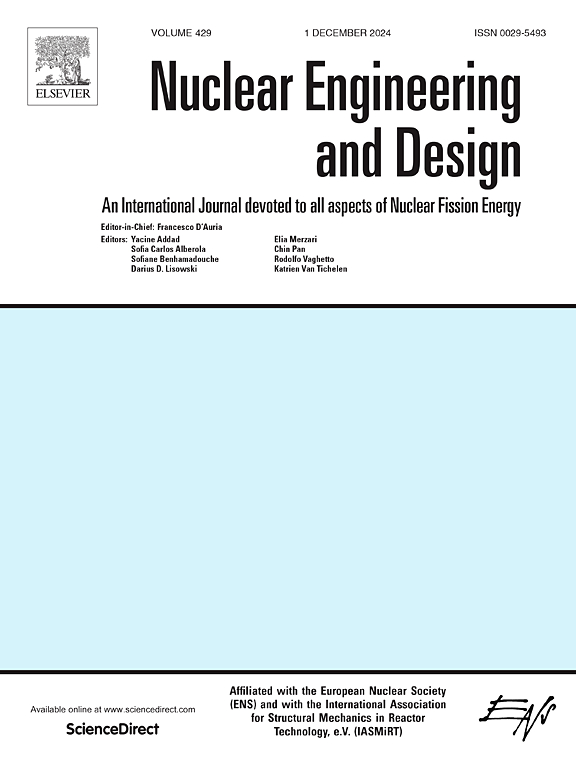Multi-scale modeling of creep behavior in U3Si2-Al composites and the impact on curved fuel elements’ irradiation performance
IF 1.9
3区 工程技术
Q1 NUCLEAR SCIENCE & TECHNOLOGY
引用次数: 0
Abstract
U3Si2-Al dispersion fuel is a promising candidate for the conversion of high-performance research reactors due to its high burnup characteristics. As irradiation time increases, the in-pile creep performance of the composite fuel plays a crucial role in determining the mechanical integrity and safety of the fuel elements. To assess the creep behavior, a multi-scale representative volume element (RVE) model of U3Si2-Al composite fuel was developed in this study and the influence factors were investigated. Meanwhile, the developed model was used in a three-dimensional finite element model to analyze the mechanical deformation of the composite fuel plates under irradiation. The obtained results show that: (1) the macroscopic creep rate of U3Si2-Al composites was influenced by factors such as U3Si2 volume fraction, tensile stress, temperature, and fission rate; (2) the aluminum matrix is the primary contributor to overall creep deformation, with its thermal creep contribution being the dominant factor, exhibiting substantially higher creep rates than U3Si2 particles; and (3) using the aluminum matrix creep model in place of the creep model with a coefficient of 50 × 10−22mm3/fission/MPa resulted in greater thickness increases and modifications in Mises stress distribution in curved fuel plates under irradiation conditions. This research provides a critical theoretical framework for understanding the creep behavior of U3Si2-Al composites, facilitating future mechanical stress analysis of fuel elements.
求助全文
约1分钟内获得全文
求助全文
来源期刊

Nuclear Engineering and Design
工程技术-核科学技术
CiteScore
3.40
自引率
11.80%
发文量
377
审稿时长
5 months
期刊介绍:
Nuclear Engineering and Design covers the wide range of disciplines involved in the engineering, design, safety and construction of nuclear fission reactors. The Editors welcome papers both on applied and innovative aspects and developments in nuclear science and technology.
Fundamentals of Reactor Design include:
• Thermal-Hydraulics and Core Physics
• Safety Analysis, Risk Assessment (PSA)
• Structural and Mechanical Engineering
• Materials Science
• Fuel Behavior and Design
• Structural Plant Design
• Engineering of Reactor Components
• Experiments
Aspects beyond fundamentals of Reactor Design covered:
• Accident Mitigation Measures
• Reactor Control Systems
• Licensing Issues
• Safeguard Engineering
• Economy of Plants
• Reprocessing / Waste Disposal
• Applications of Nuclear Energy
• Maintenance
• Decommissioning
Papers on new reactor ideas and developments (Generation IV reactors) such as inherently safe modular HTRs, High Performance LWRs/HWRs and LMFBs/GFR will be considered; Actinide Burners, Accelerator Driven Systems, Energy Amplifiers and other special designs of power and research reactors and their applications are also encouraged.
 求助内容:
求助内容: 应助结果提醒方式:
应助结果提醒方式:


